Pocophone, a new smartphone brand under Xiaomi, plans to shake the market with their Pocophone F1. It’s basically a flagship-grade smartphone on paper, but what got people excited about it is its very aggressive pricing. Check out our in-depth hands-on of the POCO F1 below.

The F1 comes in three colors – Graphite Black, Steel Blue, and Rosso Red. There’s also an Armoured Edition with Kevlar Aramid fiber. For this hands-on, we’re taking a look at the Steel Blue model.
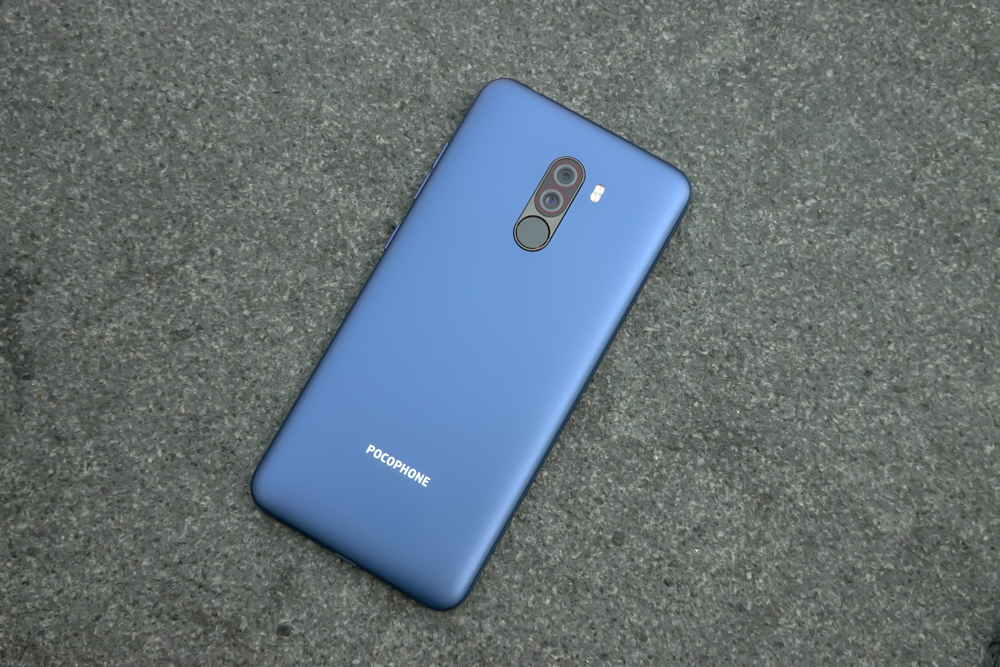
One of the first things you’ll notice about the F1 is its large screen. It definitely is large at 6.18-inches with Full HD+ (2246 x 1080) resolution or equal to 403ppi. It has an 18.7:9 aspect ratio with a rather thick notch on top.

The display is nice as it is sharp with good viewing angles and accurate colors. However, it’s prone to glare but the bright screen was able to keep things legible. As for its screen protection, it uses Corning’s Gorilla Glass so it should be able to withstand minor scratches and bumps.
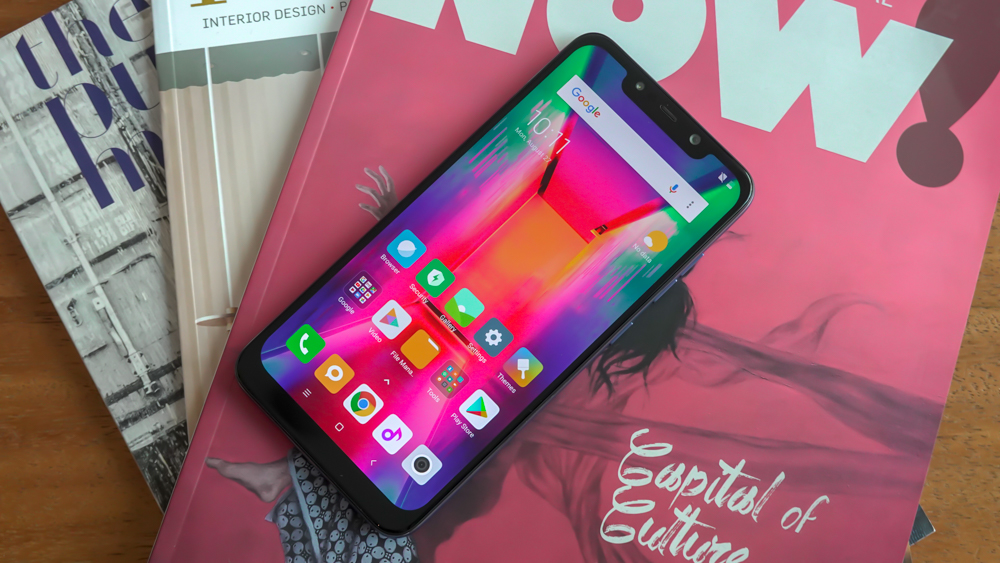
Going back to the notch, it houses the 20MP front camera, earpiece, proximity sensor, infrared lens, and infrared lighting. Down below at the center of the chin, is the notifications LED.

Found on the left side of the device are the volume and power/lock buttons. They’re plastic but firm, clicky, and easy to reach.
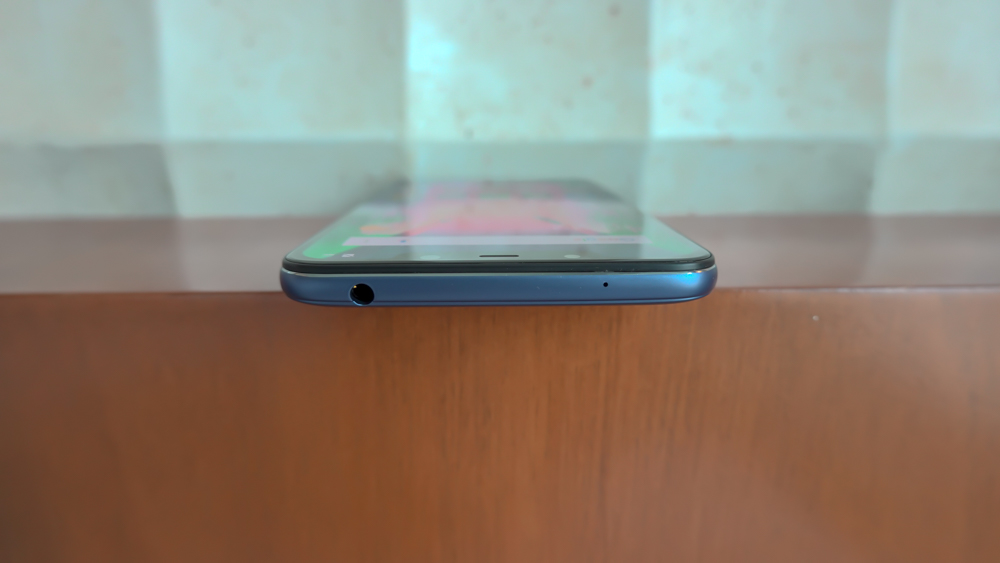
Up top are the 3..5mm audio port and the secondary microphone, while down below are the loudspeaker, main microphone, and the USB Type-C port.

Flip it on its back and you will see the dual rear cameras, fingerprint scanner, and the LED flash.
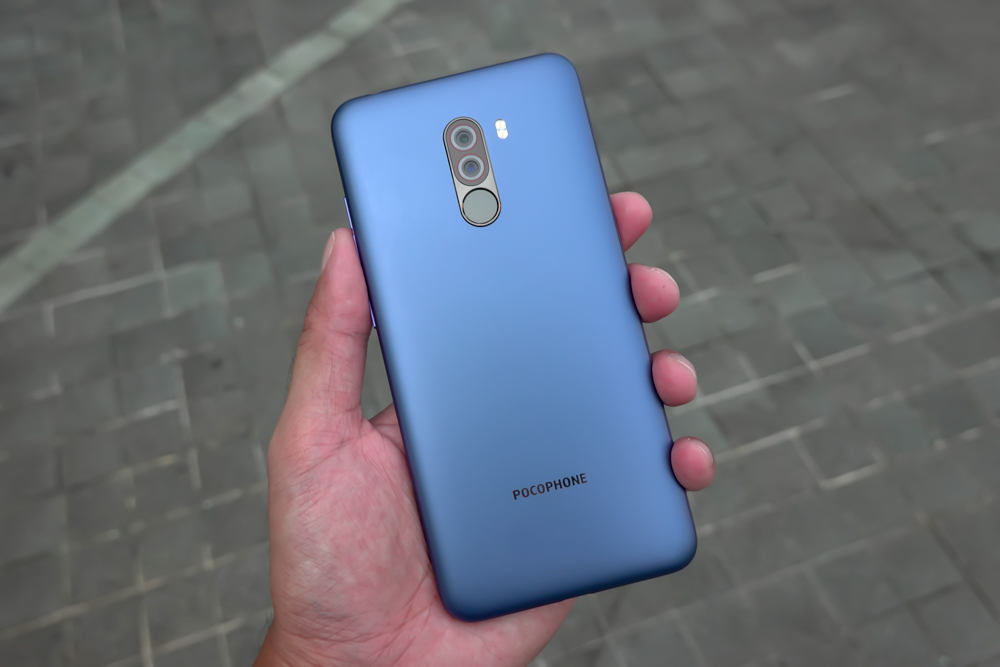
Quality-wise, the F1 feels far from the premium glass and metal we’re accustomed to, but it looks and feels really good for something that is made of plastic. The hard-coated polycarbonate unibody is solid, it doesn’t creak when squeezed or sound hollow when tapped. The finish is also able to resist fingerprints and smudges well.

At 182g it’s already hefty so we’re starting to appreciate the use of polycarbonate to keep the weight in check. It’s tall and a bit wide so navigation of the UI would often require both hands.
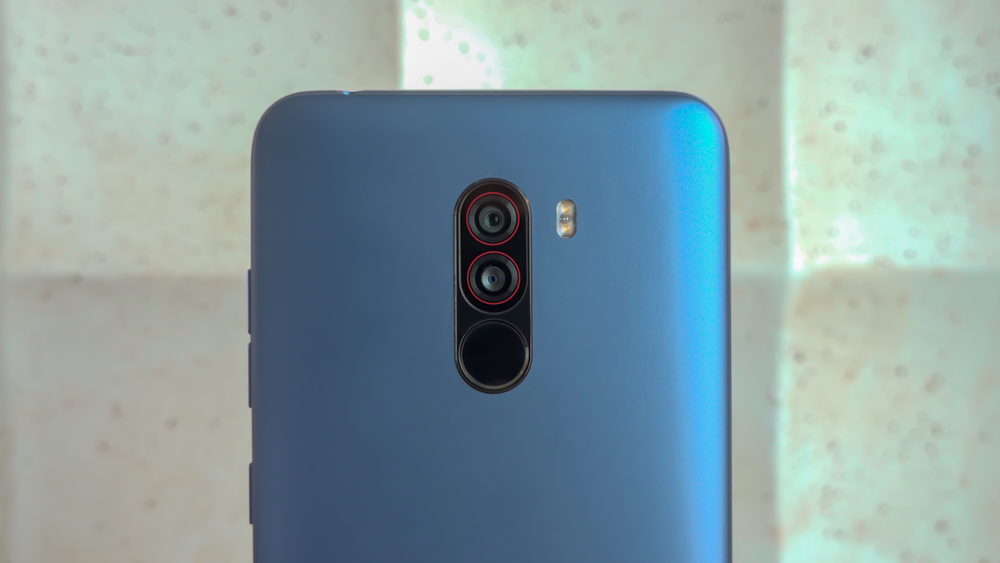
When it comes to imaging, the F1 sports a 12MP main rear shooter with the Sony IMX363 sensor, which is the same sensor found on the Xiaomi Mi Mix 2S. The secondary camera, on the other hand, is handled by a 5MP Samsung sensor. For selfies, it has a 20MP camera.
The images produced are good as they’re sharp with punchy colors and great dynamic range. Low-light performance is also good and was able to preserve details while keeping the noise down. We can attribute the performance to the camera’s built-in AI capabilities.
Running the software is MIUI for POCO (MIUI 9.6.11.0 Stable) based on Android 8.1 Oreo which is basically a slightly customized version of Xiaomi’s MIUI. It has multiple home screens but also has an app drawer that you can bring out by swiping up. The apps are pre-arranged by category but you can add your own tab.

Speaking of apps, we have the usual Google apps, as well as pre-installed ones from Microsoft, Facebook, and Lazada. Overall, we’re getting 52.6GB of usable space out of the 64GB.

Other features include the ability to hide the notch, Second Space which allows you to make your own private home screen, Button and Gesture navigation, Dual Apps, Security app, and App Lock.

Powering the F1 is a Qualcomm Snapdragon 845, Adreno 630 GPU, 6GB or 8GB RAM, and a 4,000mAh battery with QC 3.0. As expected, performance is great and it was able to keep things running smoothly. The fingerprint scanner and face unlock feature are very fast and responsive. Even games like NBA 2K18 are easily playable in high settings.

When it comes to thermals, there’s a slight warming felt beside the cameras when running games and benchmarking apps but it’s very minimal, so we can say that the LiquidCooling technology works.
Check out some of the benchmark scores below:
• AnTuTu – 264,977
• PCMark – 7,427 (Work 2.0)
• AndroBench – 700.88 MB/s (Read), 146.69 MB/s (Write)
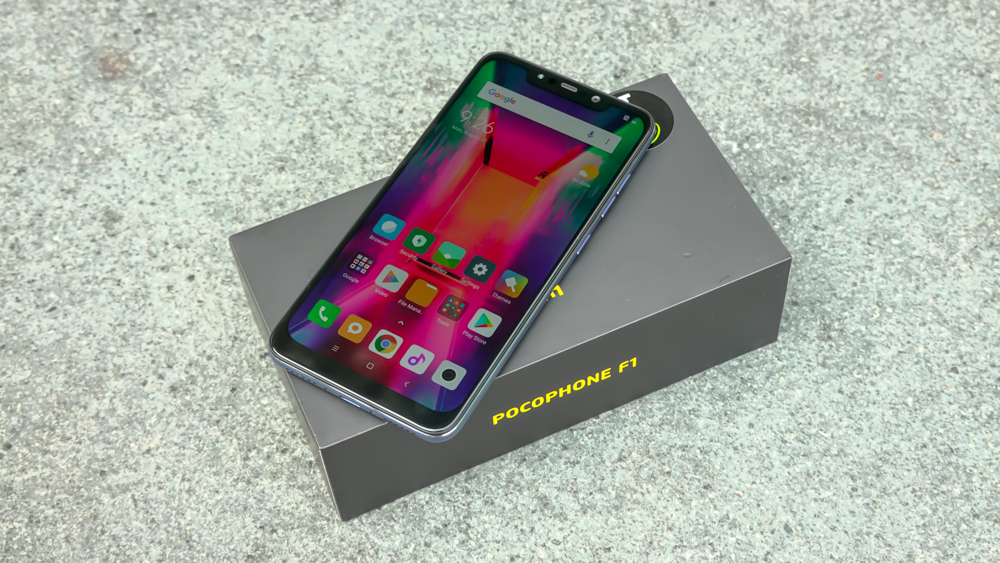
| Specs | POCO F1 |
|---|---|
| Display | 6.18-inch Full HD+ edge-to-edge display @ 2160 x 1080px |
| Glass protection | Corning Gorilla Glass (version not specified) |
| CPU | Qualcomm Snapdragon 845 2.8GHz octa-core |
| GPU | Adreno 630 |
| RAM | 6GB/8GB LPDDR4X |
| Storage | 64GB/256GB |
| Expandable Storage | expandable via MicroSD up to 256GB |
| Rear Camera | 12MP Sony IMX363 + 5MP Samsung sensor rear cameras, LED flash |
| Front Camera | 20MP front camera |
| Connectivity | 4G+ VoLTE (India) |
| SIM | Dual-SIM (hybrid) |
| Wi-Fi | WiFi 802.11 a/b/g/n/ac |
| Bluetooth | Bluetooth 5.0 |
| GPS | GPS, A-GPS, GLONASS |
| USB | USB Type-C |
| OS | MIUI for POCO (Android 8.1 Oreo) |
| Battery | 4,000mAh battery w/ QC 3.0 |
And that sums up our hands-on of the Pocophone F1. We’ll give you more insights about the device in our full review. The Pocophone F1 will retail in the Philippines at PHP 17,990USD 307INR 25,988EUR 292CNY 2,233 and PHP 19,990USD 341INR 28,878EUR 324CNY 2,481 for the 6GB+64GB and 6GB+128GB versions respectively. It will initially be offered at Lazada with store availability at Mi authorized to follow on September 6th. No word yet on the Armoured Edition.

YugaTech.com is the largest and longest-running technology site in the Philippines. Originally established in October 2002, the site was transformed into a full-fledged technology platform in 2005.
How to transfer, withdraw money from PayPal to GCash
Prices of Starlink satellite in the Philippines
Install Google GBox to Huawei smartphones
Pag-IBIG MP2 online application
How to check PhilHealth contributions online
How to find your SIM card serial number
Globe, PLDT, Converge, Sky: Unli fiber internet plans compared
10 biggest games in the Google Play Store
LTO periodic medical exam for 10-year licenses
Netflix codes to unlock hidden TV shows, movies
Apple, Asus, Cherry Mobile, Huawei, LG, Nokia, Oppo, Samsung, Sony, Vivo, Xiaomi, Lenovo, Infinix Mobile, Pocophone, Honor, iPhone, OnePlus, Tecno, Realme, HTC, Gionee, Kata, IQ00, Redmi, Razer, CloudFone, Motorola, Panasonic, TCL, Wiko
Best Android smartphones between PHP 20,000 - 25,000
Smartphones under PHP 10,000 in the Philippines
Smartphones under PHP 12K Philippines
Best smartphones for kids under PHP 7,000
Smartphones under PHP 15,000 in the Philippines
Best Android smartphones between PHP 15,000 - 20,000
Smartphones under PHP 20,000 in the Philippines
Most affordable 5G phones in the Philippines under PHP 20K
5G smartphones in the Philippines under PHP 16K
Smartphone pricelist Philippines 2024
Smartphone pricelist Philippines 2023
Smartphone pricelist Philippines 2022
Smartphone pricelist Philippines 2021
Smartphone pricelist Philippines 2020
Gopocogo says:
Since plastic ang likod sana ginawa na din nilang removable ang battery para best deal sa pubg gamers.
EviLcOs says:
Mas mahal sa Pilipinas ito compared to India… :(
Toink says:
Does it support OTG?
pocophonekills says:
Flagship killer.
Andre says:
How is the build quality compared to an old flagship? I have an S7 and I might upgrade soon.
Thomas says:
Wow this site is very professional and the reviews are awesome. Do you looking for a prof. cameraman from germany with technical skills and smartphone know how? I would love to work with your Team.
gab says:
okay narin yan, kesa sa EU. €330 or lagpas 20k ung pricing nila sa base model
Jacob says:
Ask ko lang okay naba ung notifications icon nito?